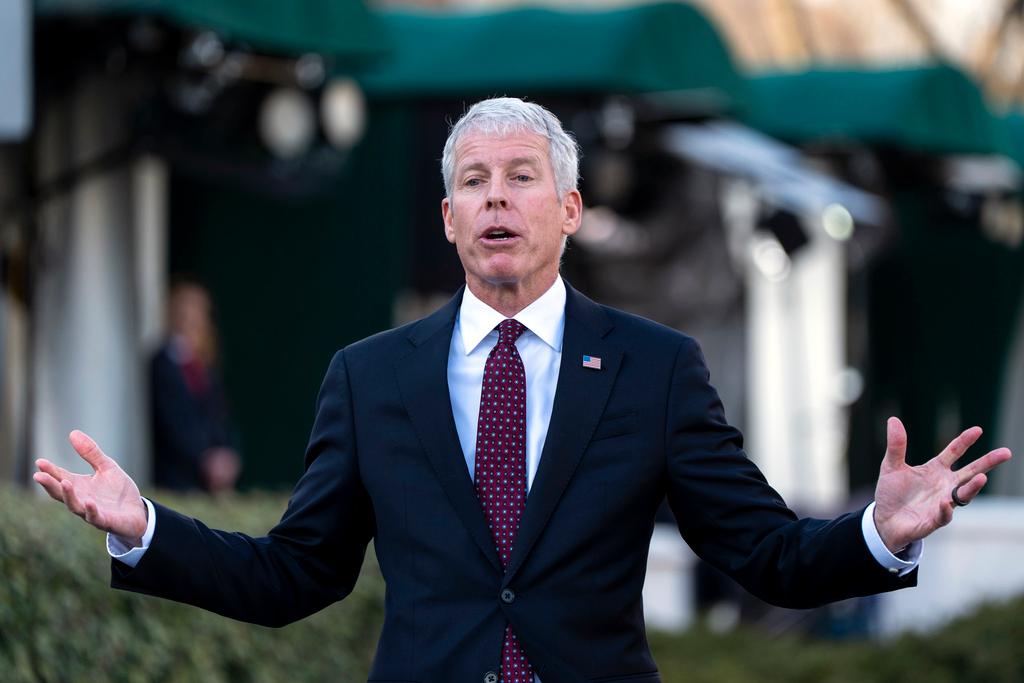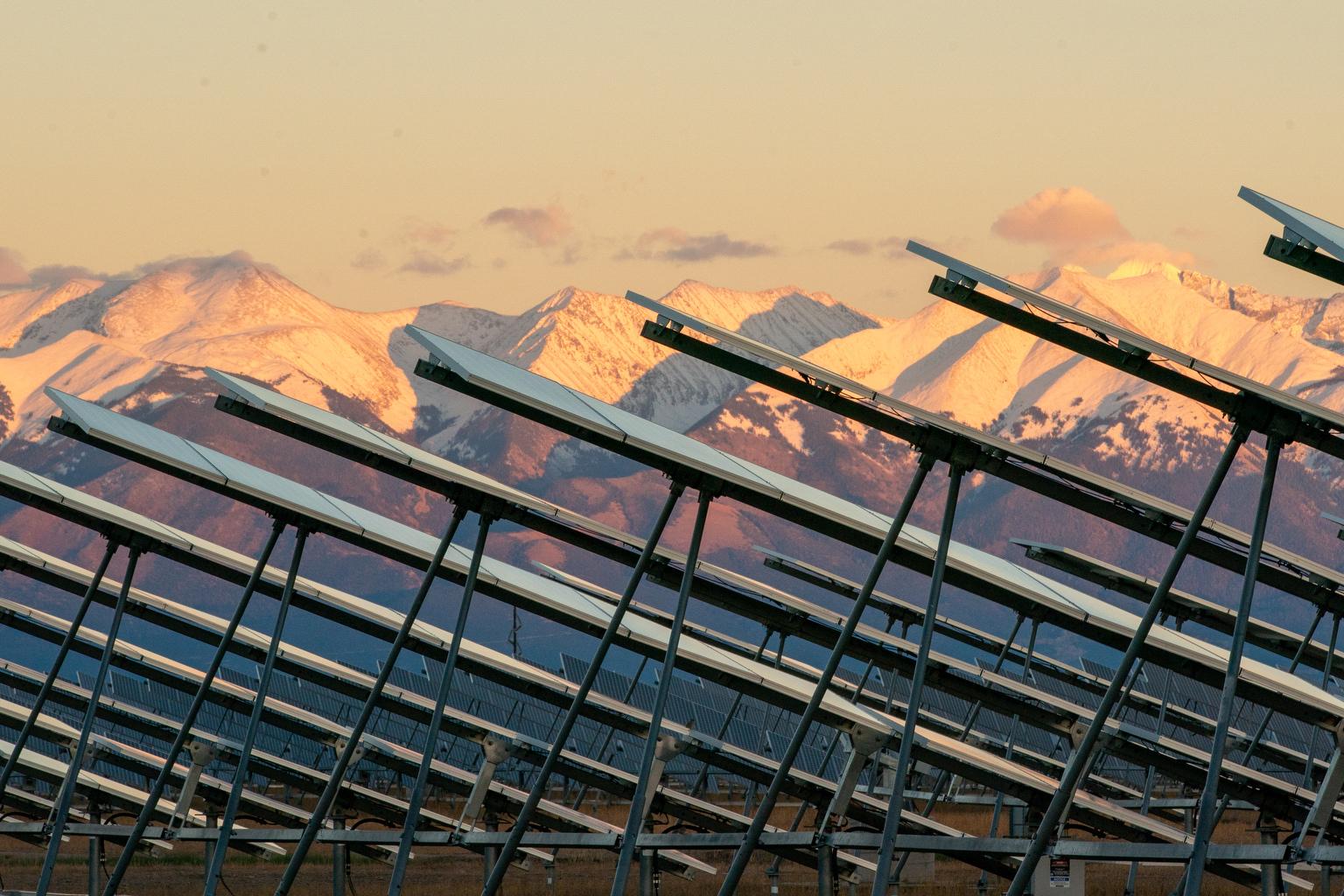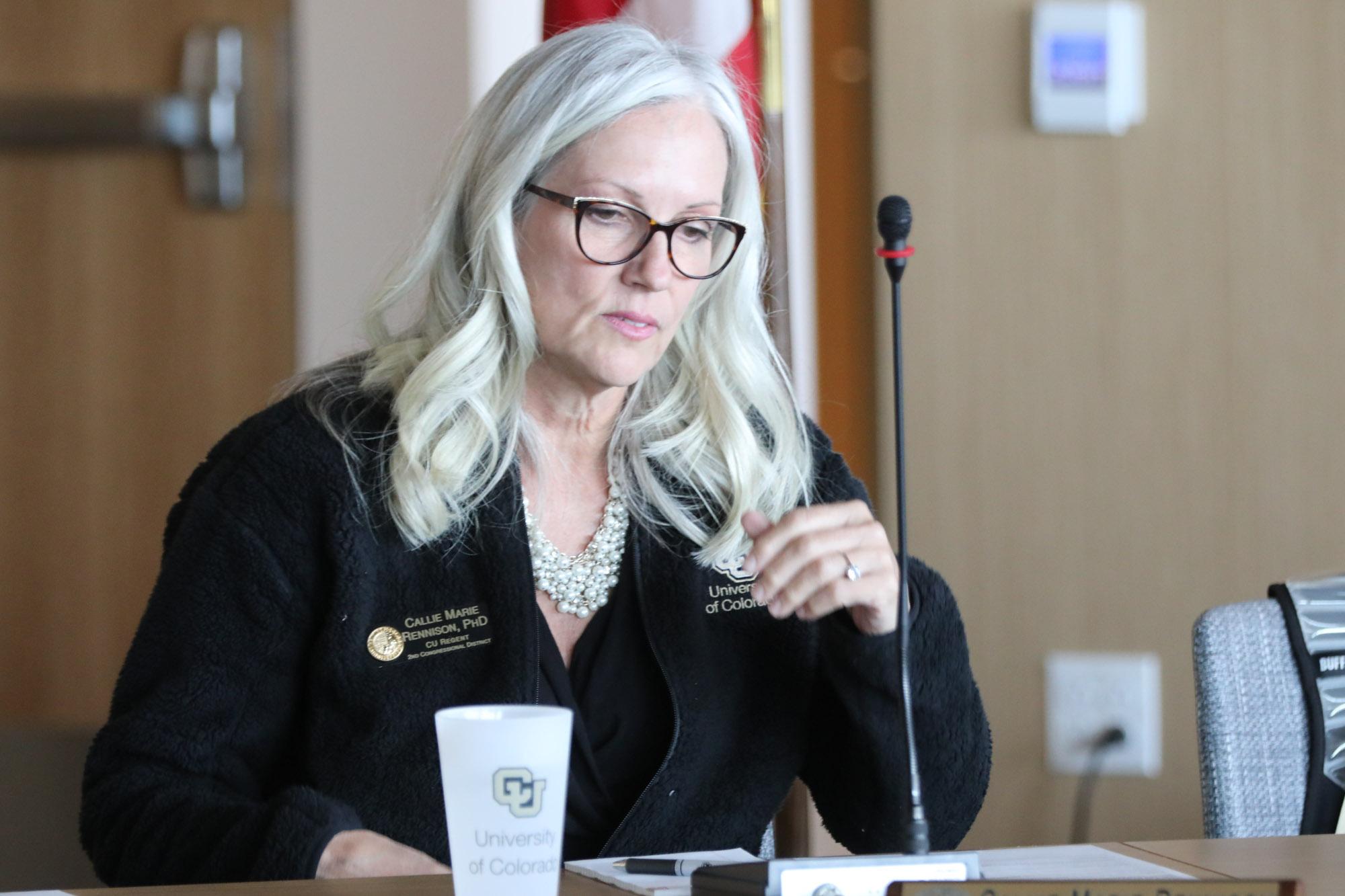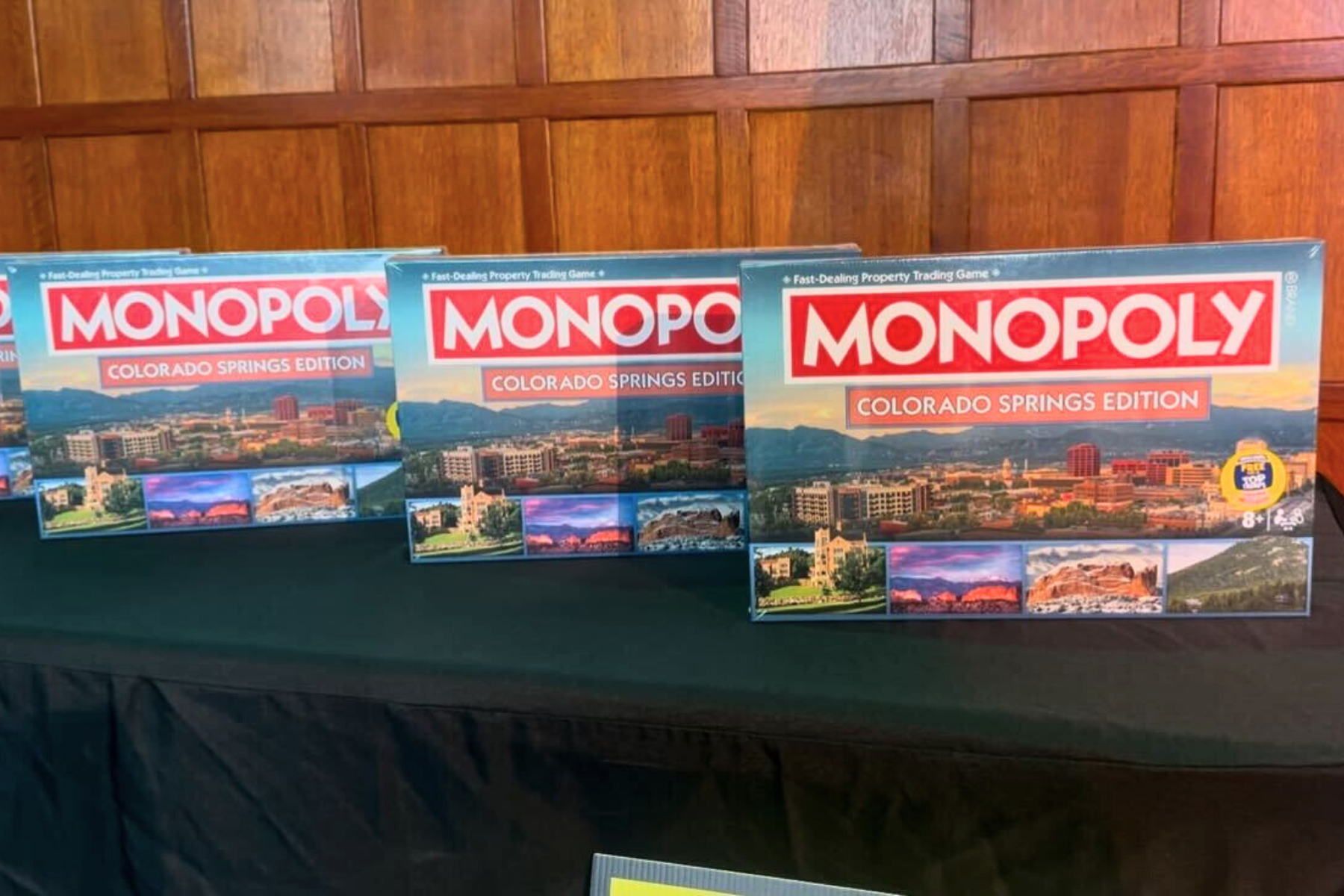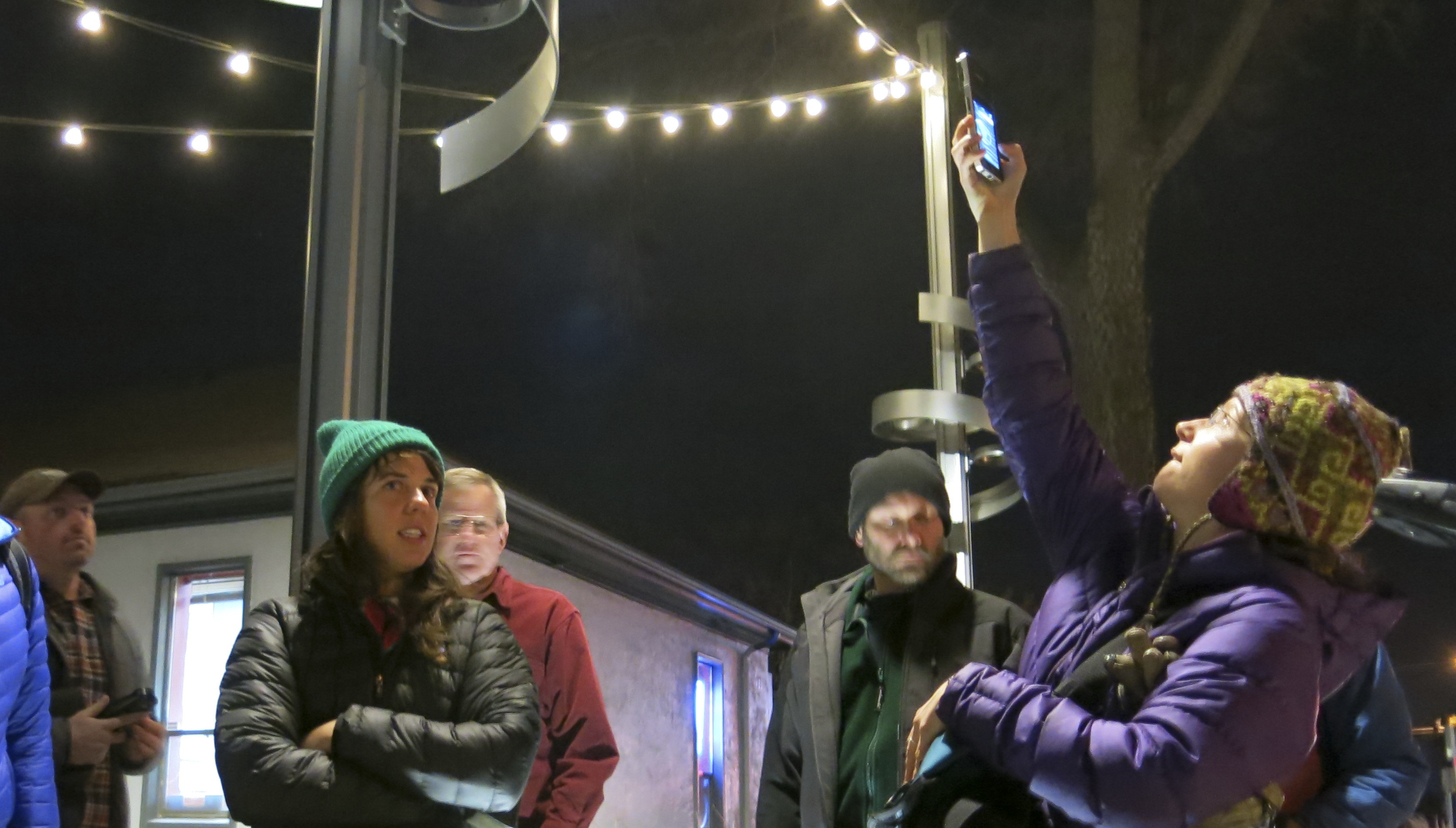
At night, the bar scene in downtown Fort Collins seems like a place for rowdy college students. So imagine the puzzled stares that a group of Patagonia-clad National Park Service workers got as they crowded outside The Mayor of Old Town Bar to study nighttime lighting.
"The first thing I want you guys to do is spread out a little bit and take a couple of minutes to count in your head at the number of different types of lights that you can see," instructed Jeremy White, a physical scientist for the National Park Service's Natural Sounds and Night Skies Division.
More than a dozen park service rangers and interpreters from across the country traveled to the Fort Collins-based division to learn how to identify light pollution inside parks. And in a city, there are culprits everywhere.
There are bar lights. Decorative lights. Lights that illuminate signs. The more you look, the more you see ineffective lighting -- an LED light is installed too close to the ground. Or a nearby light that floods a parking lot--nearly blinding pedestrians across the street.
"When we look at lighting, and when you look at lighting in parks and in other protected areas, you want to think about why that light is there. What is the purpose of that light? What is the task?" said White.
For more than a decade, the NSNS division has worked to preserve the dark sky inside parks. Every park's problems are unique. While Black Canyon of the Gunnison Park has 50 light fixtures, Grand Canyon National Park has about 5,000.
"We have a lot of work to do in our own house, so to speak," said NSNS physical scientist Bob Meadows. "With the night sky, we know exactly what the natural night sky is. And even better, it’s still there. We haven’t lost that night sky. We could turn out the lights, and it’s there as it was 150 years ago, or 200 years ago, or 5,000 years ago."
Fixing Light Pollution In Parks
From NPS’s perspective, there are two big concerns. The first is to maintain dark skies inside parks because night sky interpretive events are the park service’s most popular programs. And the second is to limit unnatural light’s impact on nature.
The impact of nighttime light on nature is what attracted PT Lathrup to the Fort Collins class. He works at Pinnacles National Park on California’s Central coast and he says that most of the wildlife there is nocturnal.
The park has 16 species of bats, 500 different kinds of moths, and a salamander found nowhere else in the world. Lathrup is worried about unnecessary light making it easier for raccoons to find a nighttime snack.
"If that is starting to encroach into areas where that wildlife is, it makes it much more easy for a raccoon to just predate on that salamander," he said.
Research has shown that artificial night light can impact animals' sleep patterns. It affects the breeding of sea turtles, frogs and toads. It also has an impact on the migratory patterns of birds.
Some solutions are as simple as turning off lights inside parks at night. The first step is to look at improperly shielded lights, or lights that shouldn’t be on at all. Other times, the fix is found outside the park.
Oil And Gas Extraction Contributes To Light Pollution
In recent years, oil and gas activity has driven some of the largest shifts in light pollution. Dinosaur National Park has started to see a glow from oil and gas equipment storage lots. At Theodore Roosevelt National Park in North Dakota, drill rigs light up the night sky.
Light measurements gathered by the NPS Natural Sounds and Dark Skies Division show the impact of oil and gas activity on the night sky. Between Oct. 2010 and May 2013, there was a 412% increase in measured sky glow in Theordore Roosevelt National Park in North Dakota.
A recent plan for new drilling on BLM land nearby Dinosaur Park includes instructions to shield rig lights.

"There's no such thing as a boundary for things like air quality and night sky is one of those too," said Dinosaur National Monument Park Ranger Sonya Popelka, who attended the training. "Because any lighting that happens outside can have long, long effects."
Cities Play A Role, Too
Travel south from Dinosaur to the four corners region and you find some of the darkest national parks--including Canyonlands and Arches. Nate Ament works to keep them that way. He heads up the Colorado Plateau Dark Skies Cooperative, a voluntary group that coordinates dark sky preservation between parks, recreational groups and cities.
One recent area of focus is cities switching to LED street lights.
"Even from some of these really dark places if a town close by has a lot of LED street lights for example that aren't shielded and are white, you can see the domes on the horizon," said Ament.
Those bluish-white lights can interfere with your ability to see stars. Some parks like the Grand Canyon are looking to incorporate LEDs, but change the color composition to make it easy to still see the stars.
Meantime, the NSNS division is coordinating with some Front Range cities like Fort Collins that are switching to LEDs. The city’s lights can be seen from Rocky Mountain National Park.

Gary Schroeder, a senior energy Services Engineer for Fort Collins Utilities, said the city recently started a Dark Skies Initiative to develop best practices for outdoor lighting. While it’s a few years away from installing the lights, the city is starting to experiment and think about the best way to incorporate LED street lights.
"The energy savings are remarkable. We have an aggressive climate action plan," said Schroeder. "At the same time, we want to look at this from a systems thinking approach so we’re not affecting some other ecosystem or aspect that might be a concern."
Other cities like Durango have already adopted light control ordinances. And the adjoining towns of Westcliffe and Silver Cliff are way ahead of the curve. They received Colorado's first ever "International Dark Sky" designation last year.
Ultimately, The Park Service is banking on all these actions helping to shore up visible night skies for the next generation of star gazers.
Editor's note: An earlier version of this story misclassified the International Dark Sky designation for Westcliffe. It was the first town in Colorado to receive the distinction, not the first in the country. The designation was shared with the adjoining town of Silver Cliff.

